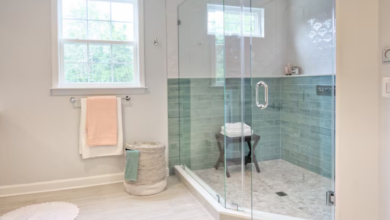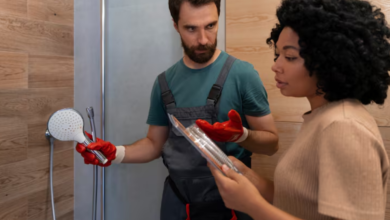Can sleep apnea be cured

Understanding Sleep Apnea
Sleep apnea is a pretty common sleep disorder, and it’s something that affects a lot of people without them even realizing it. Basically, it’s when your breathing repeatedly stops and starts while you’re asleep. These pauses can last for a few seconds to a minute or even longer, and they can happen many times an hour. This constant interruption messes with your sleep cycle, preventing you from getting the deep, restorative sleep your body needs. It’s not just about snoring loudly, though that’s a big clue. It’s about your body actually struggling to breathe properly during sleep.
What is Sleep Apnea?
At its core, sleep apnea is a condition where your breathing is interrupted during sleep. Think of it like your body forgetting to breathe for short periods. These breathing pauses, called apneas, can happen for a variety of reasons. When breathing stops, your blood oxygen levels drop, and your brain briefly wakes you up so you can start breathing again. You might not even remember these awakenings, but they prevent you from reaching the deeper stages of sleep. This can leave you feeling tired and groggy the next day, even if you think you slept a full night.
Types of Sleep Apnea
There are actually a few different kinds of sleep apnea. The most common one is called obstructive sleep apnea (OSA). This happens when your throat muscles relax too much during sleep, blocking your airway. Then there’s central sleep apnea (CSA), which is less common. With CSA, your brain doesn’t send the right signals to the muscles that control breathing. Sometimes people can have a mix of both, known as complex or mixed sleep apnea. Understanding which type you have is important for figuring out the best way to manage it.
Common Symptoms
So, what are the signs that you might have sleep apnea? Loud, persistent snoring is a big one, often described as disruptive. Another major symptom is feeling excessively tired during the day, even after a full night’s sleep. You might also experience headaches in the morning, difficulty concentrating, irritability, or even falling asleep during activities like driving or watching TV. Some people also report waking up gasping or choking during the night. If you notice any of these, especially a combination, it’s worth looking into.
It’s easy to dismiss symptoms like daytime tiredness as just being busy or stressed, but when it’s persistent and accompanied by other signs like loud snoring or observed breathing pauses, it could point to a more serious underlying condition like sleep apnea. Paying attention to these signals is the first step toward getting help.
Here are some common symptoms to watch out for:
- Loud and chronic snoring
- Observed pauses in breathing during sleep
- Gasping or choking during sleep
- Excessive daytime sleepiness (hypersomnia)
- Morning headaches
- Difficulty concentrating
- Irritability or mood changes
- Waking up with a dry mouth or sore throat
While sleep apnea can affect anyone, certain factors increase your risk. Being overweight is a major one, as excess weight can put pressure on your airway. Other risk factors include having a thicker neck, a narrower airway, a family history of sleep apnea, and certain medical conditions like high blood pressure or diabetes. For those in the Poway area, recognizing these symptoms and risk factors is key to seeking timely diagnosis and treatment for sleep apnea in Poway.
Exploring Treatment Options
When you’re dealing with sleep apnea, finding the right treatment is key to getting a good night’s sleep and improving your overall health. There are several effective options available, and what works best can depend on the type and severity of your sleep apnea, as well as your personal preferences. It’s not a one-size-fits-all situation, so talking with a doctor is really important.
Continuous Positive Airway Pressure (CPAP)
CPAP is often the first line of treatment recommended for moderate to severe obstructive sleep apnea. It works by delivering a steady stream of air through a mask worn during sleep. This air pressure keeps your airway open, preventing the pauses in breathing that characterize sleep apnea. While it might take some getting used to, many people find significant relief and improved sleep quality with consistent CPAP use. There are different types of masks and machines available, so you can work with your doctor to find a setup that’s comfortable for you.
Oral Appliances
For milder cases of sleep apnea, or for those who can’t tolerate CPAP, oral appliances can be a great alternative. These custom-fitted devices are similar to mouthguards or retainers and are worn during sleep. They work by repositioning your jaw or tongue to keep your airway open. Oral device therapy in Poway is a popular choice for many patients seeking a less intrusive solution. It’s important to get these from a dentist experienced in sleep apnea treatment to ensure they are properly fitted and effective.
Lifestyle Modifications
Sometimes, simple changes to your daily habits can make a big difference in managing sleep apnea. These modifications often complement other treatments. Some common recommendations include:
- Weight Loss: If you are overweight, losing even a small amount of weight can significantly reduce the severity of your sleep apnea.
- Avoiding Alcohol and Sedatives: These substances can relax the muscles in your throat, making airway collapse more likely.
- Changing Sleep Position: Sleeping on your side instead of your back can help keep your airway open.
- Quitting Smoking: Smoking can increase inflammation in your airways, worsening sleep apnea symptoms.
These lifestyle changes are not only beneficial for sleep apnea but also contribute to your overall well-being. They are often a vital part of a comprehensive treatment plan, especially for individuals managing sleep apnea in Poway.
Surgical Interventions for Sleep Apnea
When other treatments like CPAP or oral device therapy in Poway haven’t quite hit the mark, surgery can be a good option for some people with sleep apnea. It’s not usually the first thing doctors suggest, but for certain types of airway blockages, it can make a big difference. Think of it as physically changing the structure that’s causing the problem.
Nasal Surgeries
Sometimes, the issue isn’t in your throat but in your nose. Things like a deviated septum, enlarged turbinates, or even nasal polyps can make it hard to breathe through your nose, which can worsen sleep apnea. Surgeries like septoplasty (to straighten the septum) or turbinate reduction can open up your nasal passages. It’s often a simpler procedure with a quicker recovery.
Throat Surgeries
This is probably what most people think of when they hear ‘sleep apnea surgery.’ These procedures aim to remove or reposition tissue in the throat that collapses during sleep. Uvulopalatopharyngoplasty (UPPP) is a common one, where excess tissue from the soft palate and uvula is removed. Tonsillectomy and adenoidectomy are also options, especially if enlarged tonsils or adenoids are the main culprits. Sometimes, these surgeries are combined to tackle multiple areas.
Jaw Advancement Surgery
This is a more involved surgery, but it can be very effective for people with a smaller lower jaw or receding chin, which can push the tongue back and block the airway. Maxillomandibular advancement (MMA) moves both the upper and lower jaws forward. This effectively enlarges the airway space behind the tongue. It’s a significant surgery, but the results for improving breathing during sleep can be quite dramatic for the right candidates.
It’s important to remember that surgery isn’t a magic bullet for everyone with sleep apnea. The success really depends on what’s causing your specific airway obstruction. A thorough evaluation by a sleep specialist is key to figuring out if surgery is the right path for you.
The Role of Weight Management
When we talk about managing sleep apnea, especially for those of us in Poway, weight often comes up. It’s not the only factor, of course, but it’s a big one for many people. Losing even a small amount of weight can make a real difference in how severe your sleep apnea is.
Impact of Obesity on Sleep Apnea
Excess weight, particularly around the neck, can narrow your airway. Think of it like a hose that’s been kinked – it restricts airflow. This narrowing is a primary reason why obesity is so closely linked to obstructive sleep apnea. When you lie down, gravity can cause this extra tissue to collapse more easily, blocking your breathing during sleep. This leads to those frequent pauses in breathing that characterize sleep apnea, disrupting your sleep cycle and causing daytime tiredness. For people dealing with sleep apnea in Poway, understanding this connection is a key step.
Effective Weight Loss Strategies
So, how do you go about losing weight in a way that actually helps? It’s not just about the number on the scale; it’s about sustainable changes.
- Dietary Adjustments: This doesn’t mean starving yourself. It’s about making smarter food choices. Focus on whole foods, lean proteins, and plenty of fruits and vegetables. Cutting back on processed foods, sugary drinks, and excessive saturated fats can have a big impact. Portion control is also really important.
- Regular Physical Activity: Finding an exercise routine you enjoy is key to sticking with it. It could be walking, swimming, cycling, or even dancing. Aim for a mix of cardio and strength training. Even moderate activity most days of the week can help.
- Behavioral Support: Sometimes, you need a little extra help. This might involve working with a nutritionist, joining a weight loss group, or even talking to a therapist if emotional eating is an issue. Support systems can make a huge difference.
It’s worth noting that sometimes, even with weight loss, sleep apnea might persist. In such cases, other treatments, like oral device therapy in Poway, can be very effective. It’s all about finding the right approach for you.
Losing weight can be a journey, and it’s okay to take it one step at a time. Celebrate small victories along the way, and don’t get discouraged by setbacks. Consistency is more important than perfection.
Seeking Professional Help in Poway
When you suspect you might have sleep apnea, especially if you’re dealing with persistent daytime tiredness or loud snoring, it’s time to look for professional help. If you’re in the Poway area, finding the right specialists is your first step toward getting a diagnosis and treatment. Getting a proper diagnosis is key to managing sleep apnea effectively.
Finding Sleep Specialists in Poway
Locating sleep specialists in Poway involves a bit of research. You can start by asking your primary care physician for a referral. Many doctors have a network of specialists they trust. Online searches are also helpful; look for clinics that specifically mention sleep disorders or sleep apnea treatment. Reading reviews can give you a sense of patient experiences and the quality of care provided. Some clinics might focus on specific treatments, like oral device therapy in Poway, so check their services.
Diagnostic Sleep Studies
Once you’ve found a specialist, the next step is usually a diagnostic sleep study, often called a polysomnogram. This test monitors your breathing, brain activity, heart rate, and oxygen levels while you sleep. It can be done at a sleep center or sometimes at home with a portable monitoring device. The results from this study are what allow doctors to confirm a diagnosis of sleep apnea and determine its severity.
Personalized Treatment Plans
After your sleep study, the specialist will review the results and work with you to create a personalized treatment plan. This plan will depend on the type and severity of your sleep apnea, as well as your overall health and personal preferences. Common treatment options include CPAP machines, oral appliances, lifestyle changes, and sometimes surgery. Your doctor will discuss the pros and cons of each option to help you make an informed decision about the best path forward for your sleep apnea in Poway.
Living Well with Sleep Apnea
Living with sleep apnea means making some adjustments, but it doesn’t mean you can’t live a full and healthy life. It’s all about managing the condition effectively and consistently. Think of it like managing any other ongoing health issue; it takes a bit of effort, but the payoff in terms of better sleep and overall well-being is huge. Many people find that once they get a handle on their sleep apnea, they feel like a different person. The constant fatigue disappears, and they have more energy for their daily activities. It’s a journey, for sure, and finding what works best for you is key. For those in the Poway area, connecting with local resources can make a big difference.
Managing Sleep Apnea Long-Term
Long-term management often involves sticking with your prescribed treatment, whether that’s CPAP, an oral device therapy in Poway, or lifestyle changes. Consistency is really the name of the game here. You’ll want to keep up with regular check-ins with your doctor or sleep specialist to make sure your treatment is still effective and to address any new issues that might pop up. Sometimes, your needs can change over time, so it’s good to stay in touch.
Improving Sleep Quality
Beyond your primary treatment, there are several things you can do to improve your overall sleep quality. Creating a relaxing bedtime routine is a big one. This could involve reading a book, taking a warm bath, or listening to calming music. Also, try to keep your bedroom dark, quiet, and cool – it makes a difference. Avoiding caffeine and alcohol close to bedtime can also help you sleep more soundly.
Support Systems for Patients
Don’t underestimate the power of support. Connecting with other people who have sleep apnea can be incredibly helpful. You can share experiences, tips, and just generally feel less alone. Look for local support groups in the Poway area or online communities. Sometimes just talking to someone who truly gets it can make a world of difference.
It’s important to remember that while sleep apnea can be a chronic condition, it is very manageable. With the right approach and consistent effort, you can significantly improve your sleep and your quality of life.
So, Can Sleep Apnea Be Cured?
Alright, so after all that, can we actually cure sleep apnea? The short answer is, it’s complicated. For most people, it’s more about managing it really well than a complete fix. Think of it like controlling a chronic condition. Treatments like CPAP machines, oral appliances, and lifestyle changes can make a huge difference, often getting things back to normal for daily life. Sometimes, surgery or losing weight can even lead to a remission, which feels pretty close to a cure. But it’s not always a one-and-done deal. The key is working with your doctor to find what works best for you and sticking with it. It takes effort, sure, but getting good sleep is totally worth it.







